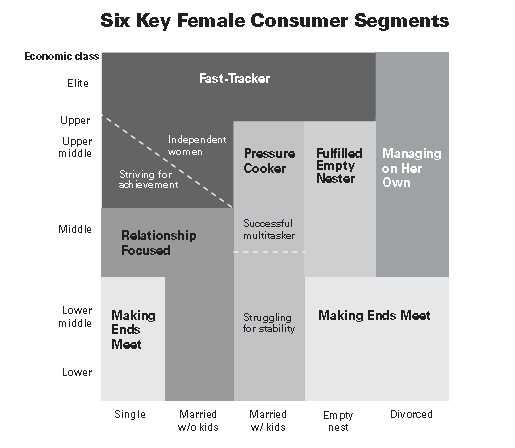Earlier this year, Michael Silverstein and Kate Sayre, two Boston Consulting Group Partners, released their findings regarding some interesting research on the impact women have had on the economy. Part of the research involved the launching of a survey website called What Do Women Want? The responses of thousands of women across the globe were analyzed.
You can read some of the early results on the survey website, or read a recent Harvard Business Review article on the topic. As I looked through the results of this research, I was surprised by the overwhelming impact that woman have on the economy. HBR puts it this way:
“Women now drive the world economy. Globally, they control about $20 trillion in annual consumer spending, and that figure could climb as high as $28 trillion in the next five years. Their $13 trillion in total yearly earnings could reach $18 trillion in the same period. In aggregate, women represent a growth market bigger than China and India combined—more than twice as big, in fact. Given those numbers, it would be foolish to ignore or underestimate the female consumer. And yet many companies do just that, even ones that are confident they have a winning strategy when it comes to women.”
You would think that with this much opportunity at stake, more companies would focus their marketing efforts on reaching women. And, it turns out that many have given it a try. However, most companies have failed miserably. Why? Because they don’t understand the needs and intricacies of women. These failures are important to understand if you are selling any sort of product or service (including real estate), but they can also teach us a lot about recruiting. Unless you’re able to craft your recruiting message in a way that resonates and impacts woman, you’ll be missing a significant opportunity.
The research on this topic is too extensive to try to summarize in this article, but it may be helpful to highlight one idea that really impacted my thinking: When marketing to women, it is important to recognize the “stage of life” they are currently occupying. This concept is summarized in the following graphic:

The research defines each of these segments, including how much of the population and income potential comprise each category. Here is a summary of each segment:
FAST-TRACKER
24% of population; 34% of earned income
Economic and educational elite
Seeks adventure and learning
Subsegments:
STRIVING FOR ACHIEVMENT
15% of population; 19% of earned income
Job and recognition are priorities
INDEPENDENT WOMEN
9% of population; 15% of earned income
Works the most
Prizes autonomyPRESSURE COOKER
22% of population; 23% of earned income
Married with children
Feels ignored and stereotyped
Subsegments:
SUCCESSFUL MULIT-TASKER
10% of population; 14% of earned income
Feels in control
STRUGGLING FOR STABILITY
12% of population; 9% of earned income
Constantly battles chaosRELATIONSHIP FOCUSED
16% of population; 13% of earned income
Content and optimistic
Isn’t pressed for time
Has ample discretionary income
Focuses on experiences, not products
MANAGING ON HER OWN
10% of population; 9% of earned income
Single again (divorced or widowed)
Seeks ways to form connections
FULFILLED EMPTY NESTER
15% of population; 16% of earned income
Largely ignored by marketers
Concerned about health and aging gracefully
Focused on travel, exercise, and leisure
MAKING ENDS MEET
12% of population; 5% of earned income
No money for beauty or exercise
Majority lack college education
Seeks credit, value, and small luxuries
From a recruiting perspective, here are some important questions to ask yourself:
- Which group of women are most successful in your organization today? Will the same group be successful in the future?
- Do you know of women who are at one stage today, who could be inspired to move to a more desirable stage by building a career inside your organization?
- Would it behoove you to spend less time focusing on particular groups of women in your recruiting efforts, so that you can increase your focus on the groups that have the highest potential return?
- Can your messaging to candidates (advertising, phone screening, interviews) be customized to tap the interests and needs of the group with which your communicating?
As any guy will tell you, this is not as easy as it looks! There is much more to learn and it may be frustrating, but the opportunities warrant the effort. Happy New Year!
Editor’s Note: This article was written by Ben Hess. Ben is the Founding Partner and Managing Director of Tidemark, Inc. and a regular contributor to WorkPuzzle. Comments or questions are welcome. If you’re an email subscriber, reply to this WorkPuzzle email. If you read the blog directly from the web, you can click the “comments” link below.

